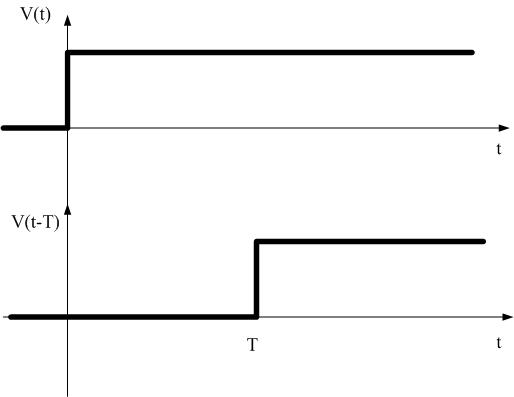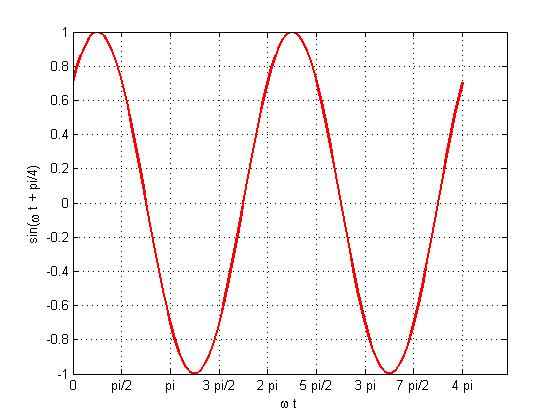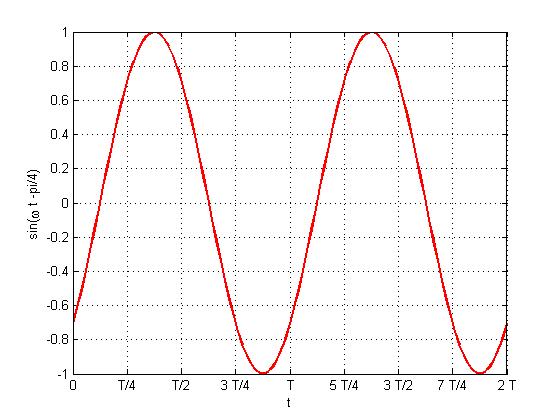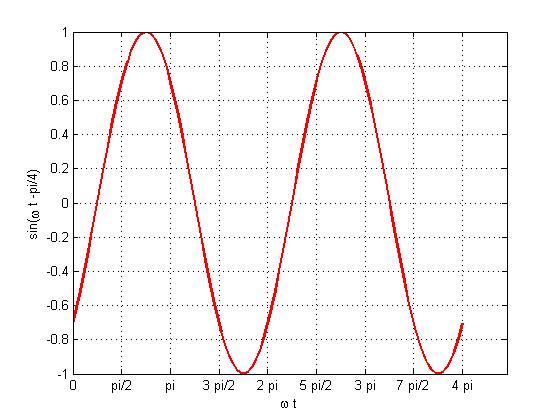Review of Sinusoidal Signals
In Figure timedelaysig we observe two step functions, V(t) and V(t-T). Function V(t) step occurs at t=0, and V(t-T) step occurs at t=T. The function V(t-T) is shifted to the right, the step occurs later, at t=T, and is, therefore, lagging function V(t).
Similarly, if the step function is V(t+T), the function v(t) is shifted to the left. The step occurs earlier at t=-T, and therefore V(t+T) is leading V(t).

What if we have a sinusoidal signal? We will observe a specific point on the signal, such as the maximum value, and determine if it shifted left or right on the graph.
When the phase of a signal is positive as in Figure sinPlus45Ph , we say that the signal is leading with respect to the signal , because it is shifted to the left for (). The maximum of the function now occurs at t=-T, or , and we can write the new function as the original sinusoidal function V(t) shifted left for a time T, V(t+T). The phase of the signal is , and the time-delay is T.


